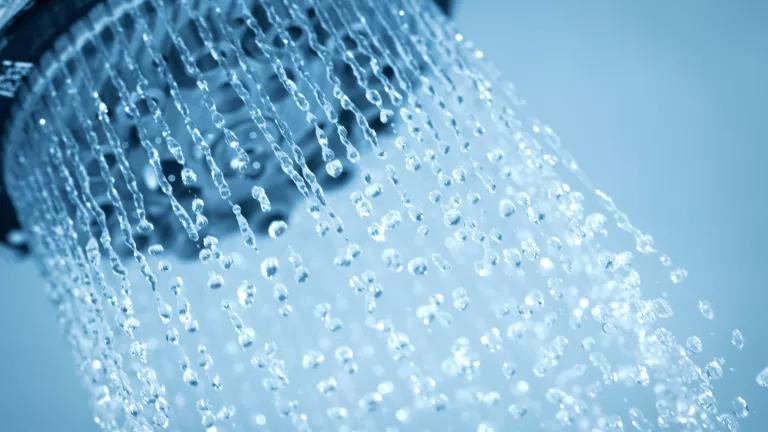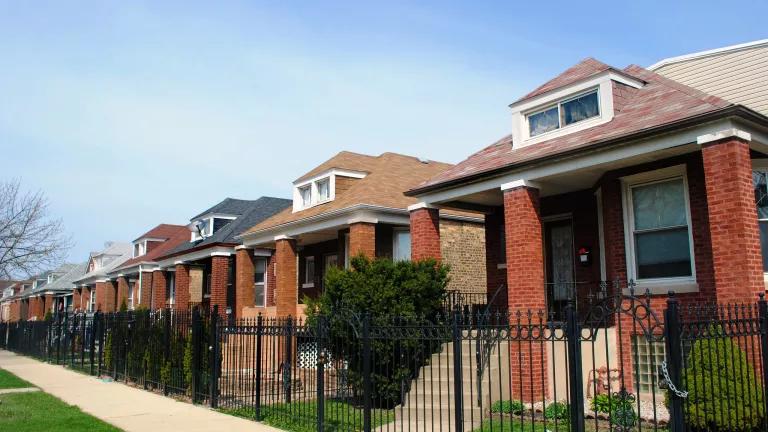Trump Attacks on Energy Efficient Appliances Are Baseless
President Trump is attacking energy-efficient appliances, using a blend of exaggeration, falsehoods, and innuendo that ignores the huge savings in energy and money that efficiency standards are delivering to America’s homes and businesses.

President Trump is attacking energy-efficient appliances, using a blend of exaggeration, falsehoods, and innuendo that ignores the huge savings in energy and money that efficiency standards are delivering to America’s homes and businesses
In a rambling White House speech criticizing energy-saving and other regulations last week, the president said he was “bringing back consumer choice in home appliances so you can buy washers and dryers, showerheads, and faucets,” as though purchasing from a wide variety of these products is impossible now. He also once again praised old style energy-wasting incandescent light bulbs.
Rather than keeping up with technology, it appears the president wants to take us backward on energy efficiency standards, which already are saving U.S. households, on average, $500 a year and are projected to save $2 trillion and help the U.S. avoid 7 billion tons of carbon pollution by 2030. His Department of Energy has missed legal deadlines to review and update 26 energy efficiency standards and 19 test procedures; rolled back light bulb standards that would have saved consumers $14 billion on their utility bills and avoided 38 million tons of climate-warming carbon dioxide emissions every year; and finalized changes to its efficiency standards process that will slow down—if not halt altogether—future efforts to make America’s appliances and equipment more efficient.
Despite the president’s claims last week about showerheads and faucets, dishwashers, and light bulbs, the facts show he’s way off the mark.
Showerheads and faucets
The president railed against showerheads and faucets that don’t exist: ones that you turn on and “the water doesn't come out.” This is absurd on its face. The emptiness of his attack on their standards is even more apparent when you consider that his administration has not changed any regulation on new showerheads or faucets, nor even proposed one. The only “action” was a non-action: in April, the Environmental Protection Agency declined to strengthen its voluntary WaterSense specifications for showerheads and faucets, which have been in place for 10 and 13 years, respectively.
Thousands of showerheads on the market today provide a vigorous shower while saving consumers energy, water, and money. With about 200 million showers taken each day in U.S. households, these savings should be celebrated, not ridiculed.
Dishwashers
President Trump stated: “Dishwashers—you didn’t have any water, so you—the people that do the dishes—you press it, and it goes again, and you do it again and again. So you might as well give them the water because you’ll end up using less water. So we made it so dishwashers now have a lot more water.”
The Department of Energy (DOE) proposed a new category of residential dishwashers on the basis of shorter washing time—even though the option for shorter washing time is widely available on new dishwashers sold today. The July 2019 proposal, which is NOT supported by major appliance manufacturers, would have NO performance criteria for either the energy or water use of dishwashers, under the pretext that performance requirements will be set at some future date.
The proposal is opposed by a wide range of groups—including the Association of Home Appliance Manufacturers (AHAM), NRDC, Sierra Club, Earthjustice, and a coalition of attorneys general of 12 states, the District of Columbia, and the City of New York. AHAM says weakening the standards from the current energy use requirements of 307 kilowatt-hours per year and 5 gallons of water per cycle (half the amount of water and energy that standard dishwashers consumed 20 years ago) would incur “additional costs for manufacturers and, ultimately, consumers.”
The proposal isn’t final yet, and is expected to be vulnerable to legal challenge.
Light bulbs
President Trump then moved on to lighting. “And old-fashioned incandescent light bulbs—I brought them back. They have two nice qualities: They’re cheaper and they’re better.” He also said they are “selling like hotcakes.”
The facts:
- LED light bulbs work great and consumers like the light they provide. LEDs are better than incandescents because they use up to 85 percent less energy to produce the same amount of light. They last 10 to 25 years while incandescents burn out and need to be replaced every year or two. An LED bulb sips rather than gulps electricity, saving consumers $50 to $100 over its lifetime.
- Incandescent and halogen light bulb sales have plummeted over the past five years and continue to drop. LEDs are the bulbs selling like hotcakes. Their share of new sales has tripled from under 20 percent to 60 percent in 2019.
The president’s claims are especially perplexing because the most common old-fashioned incandescent light bulbs—whose technology dated back to the days of Thomas Edison and gave off 90 percent of their energy as heat—have been illegal to sell in the United States since 2014 and that hasn’t changed. Today’s pear-shaped bulbs like the ones used in our table and bedside lamps use 28 percent less energy than those bulbs, as required by the Energy Independence and Security Act (EISA) of 2007. Therefore, President Trump hasn’t brought back old-fashioned incandescent bulbs.
The everyday pear-shaped bulbs he refers to, plus almost all the other bulbs in our homes, were supposed to have a minimum efficiency level of 45 lumens per watt as of Jan. 1, 2020, which would effectively have phased out incandescents and halogens as today’s versions don’t meet that level. The DOE failed to finalize and implement these standards as required under EISA, and incandescents and halogens can continue to be sold (except in California, with a few exceptions). NRDC, other groups, and attorneys general from several states sued DOE over the illegal rollback and we expect the courts to restore the standards as intended by Congress.
The stronger light bulb standards envisioned by a bipartisan Congress more than 12 years ago would save the average U.S. household more than $100 annually and prevent 38 million additional tons of climate-warming carbon dioxide pollution every year.
It’s mystifying why President Trump is so intent on “saving” old-style incandescent bulbs (we and others pushed back on other claims he’s made against LEDs). And with people spending more time at home during the pandemic—with their lights on for longer periods—why is he pushing an outdated technology that further increases their energy bills?
The president may want to take us backward on energy efficiency standards but fortunately, in these three cases, his boasts have exceeded his accomplishments.


